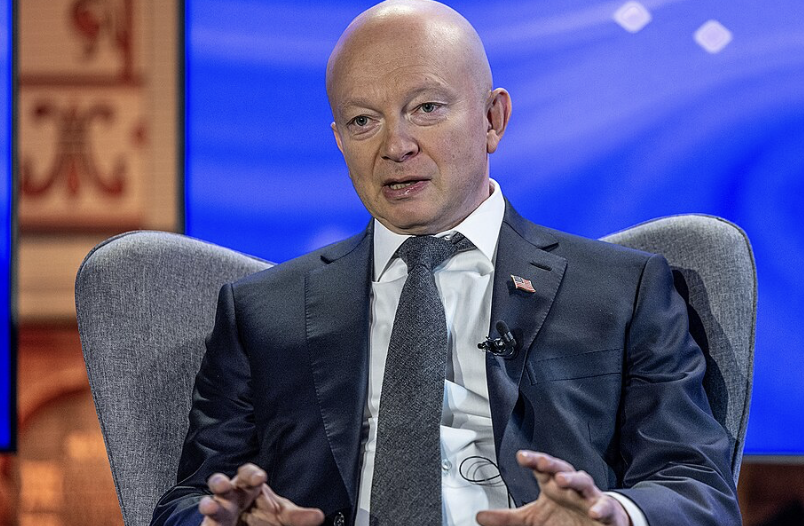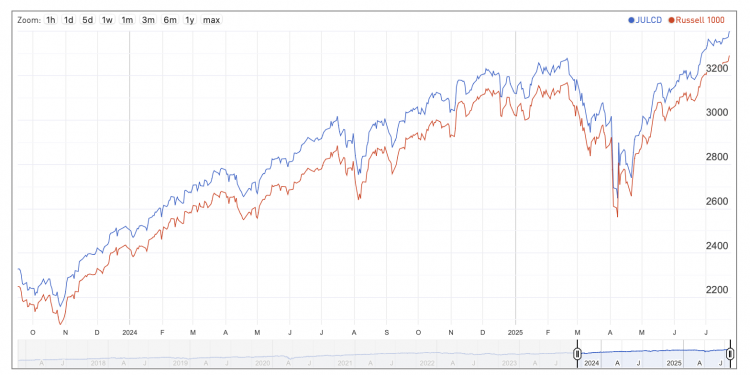How Will Predictive AI Reshape Business? Our Conversation with Igor Tulchinsky

AI’s impact on the future of work continues to dominate the headlines in 2024, particularly when it comes to rapid adoption of generative and predictive AI algorithms.
Igor Tulchinsky is the Founder, Chairman, and CEO of WorldQuant, a global quantitative asset management firm with over $7 billion in assets under management. His 2023 book, The Age of Prediction: Algorithms, AI, and the Shifting Shadows of Risk, looks at how predictive AI technology is quietly reshaping our world in fundamental ways.
JUST Capital’s CEO Martin Whittaker sat down with him to discuss the benefits and dangers of this technology for America’s business leaders and workers.
Full interview below:
Martin:
You’ve discussed at length some examples of predictive technology being adopted right now – for example, the medical field tapping into the power of analyzing patterns in emerging infectious diseases. What are other ways AI’s predictive power can be used to help communities? What are some potential future uses that you envision?
Igor:
Over the next decade, I believe we can expect further disruption to economies and organizations, driven by increasingly sophisticated language models and the anticipated rise of artificial intelligence. This growth in intelligence is expected to enable the rapid analysis of vast amounts of information, enhancing productivity and innovation across various sectors.
Healthcare and medicine already seem to be benefitting from these tools, enabling advanced techniques that can provide better outcomes for people. The medical community appears to increasingly leverage predictive AI to understand patterns of emerging infectious diseases and to improve DNA and RNA sequencing from human patients.
Technology also holds the promise to revolutionize education by breaking down barriers to access and enabling rapid adaptation to evolving skills landscapes. From my perspective, we’ve only scratched the surface of predictive technology’s possibilities, yet these initial advancements present significant opportunities to utilize predictive AI in impactful ways in the future.
Martin:
There are technologies that radically transformed society – the wheel, gun powder, the printing press, the electrical conductor, the internet. Looking back at the adoption, spread, application, and regulation of these technologies – what’s one lesson from history that we can take to guide how we encourage just AI?
Igor:
As long as humans have been inventors, there have been positive and negative use cases of new technology. While the first axe could harm, it could also cut wood for the first fire. Over time, I believe we as a society have gotten better at instituting governance structures to help mitigate the problematic and harness the positive outputs and potential of technologies. While AI has the potential to both make our lives easier and more challenging, I view it as just a tool, driven by human-decision making that will determine the course of its use. Overall, I believe the most prolific and efficient use cases for AI will also be the ethical ones, many of which we already see happening across the medical and education fields.
Martin:
In your book, you discuss the challenges as much as you do the opportunities associated with predictive technologies. What are some examples of risks around AI and its predictive power that organizations and leaders should be aware of? What can be done to mitigate these risks and challenges? Is there a possibility that AI’s potential for harm outweighs its potential for good?
Igor:
Technological advancements, while improving daily life, can also present existential challenges. There are examples throughout history of new technologies that have had positive and negative impacts, and in many of these cases, humans have improved in implementing controls to focus on positive innovation. Take cars, for example – they revolutionized travel and productivity, but safety measures like maintenance, seatbelts, and airbags evolved to mitigate risks.
The adoption of predictive technologies also brings with it increased complexity that leaders will need to learn to manage. Importantly, what is underlying all this change and progress is how humans and machines will continue to have a symbiotic relationship. AI does not have the same intent or purpose that humans possess. Because of this, I believe that humans remain imperative in guiding and directing the technology in a way that ensures it is justly deployed. With AI, I think that it is critical that ethical considerations, guidelines, and potential regulatory frameworks are developed in tandem with technological progress as unforeseen outcomes make themselves known.
Martin:
How will AI impact our relationship with the future in terms of its effect on how we approach risk? With increased predictability, can we guarantee more certain outcomes?
Igor:
The proliferation of data is providing us with some clarity about what the future may look like, and AI is already helping us process data and use it to predict outcomes across a number of areas. With this transformation in the future – and partly because of it – may come a countervailing impulse: the desire to increasingly model a world that is confoundingly complex.
The range of potential outcomes is growing, particularly as we discover new use cases. Over time, it will become clear whether AI will make all risks quantifiable and comprehensible, or if our cognitive machines will merely generate new risks and anxieties. For now, the only certainty is that as this process plays out, we should adjust our conception of risk. Continuous testing and monitoring of evolving risks are crucial. The significant growth of data could allow us to create more predictive tools and increasingly strengthen our predictions, but I view it as critical that we refine our ability to process and utilize this information to both capitalize on untapped opportunities and mitigate potential risks.
Martin:
You’ve previously said that the nature of AI technology means a “variety of people have the potential to make an impact.” Talk to me about how we can drive diversity of thought and diversity of actors with AI. How can we ensure the technology is leveraged as a source of greater inclusion? What are you doing to help bring AI to a greater number of people?
Igor:
The commoditization of AI ultimately may mean the commoditization of intelligence. This could present an opportunity to enhance accessibility to education and in turn to the jobs that that education unlocks, therefore fostering a more inclusive workforce. I believe that by increasing accessibility to education through varied learning pathways and simplified interfaces, diverse groups of people can have access to quality educational opportunities that were previously unavailable. As an example, I founded WorldQuant University with the goal of expanding access to higher education. The organization utilizes technological capabilities to offer a comprehensive and accredited advanced education for free in fields like Financial Engineering and Data Science to diverse student groups worldwide. I have always held the belief that talent is globally distributed, opportunity is not. Through WorldQuant University’s online learning platform, we are able to bring these upskilling opportunities to talented individuals who might not have otherwise had access.
Martin:Who do you think will be the biggest winners and losers in the age of AI? As more and more actors enter the conversation around AI, what will be a key determinant for success?
Igor:
In the age of AI, I think the greatest beneficiaries will be those who actively embrace and collaborate with these emerging technologies. I believe intelligence will become commoditized and lead to increased mechanization across industries that rely on this kind of standardized intelligence. This evolution alone has the potential to revolutionize most sectors. Wherever people can find opportunities to scale, I believe that technology can be an effective propagator and provide tremendous power. To the extent that humans contribute beyond the components that can be commoditized, that will be our value.






